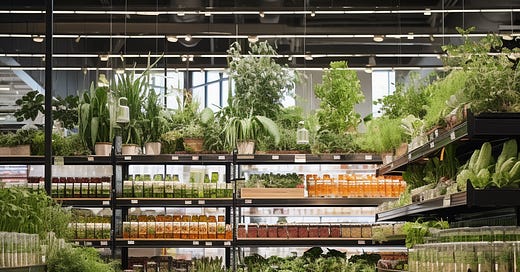For your convenience, an index for this series.
This post is pitched towards people who live in regions similar to the United Kingdom, which can be described as a cold temperate climate - that is, winters that generally stay above -5°C and summers that don’t really go above 30°C, with mild, generally wet weather. It’s pitched towards this climate because that is where I live, and where I have experience in establishing my small backyard food forest, but I believe the general principles are applicable to every climate.
So let’s say you’ve read a few books on food forests, such as the classic “Paradise Lot” by Eric Toensmeier and Jonathan Bates, or Martin Crawford’s amazing “Creating a Forest Garden” (this is the one that started me down the slippery slope..).
If you were anything like me, whilst you were reading, you had a notebook on hand to write down must have plant species when you establish your own paradise lot. And you probably fell down the Plants for a Future database rabbit hole, pulling out more and more amazing species that you must have. I know I did this and I’m guessing I’m not the only one.
Ken Fern parted ways with the Plants for a Future database (Ken Fern) - he was the founder, but now independently runs two edible plant databases. I find the user experience nicer on his current databases, and they might even have more species
Amazing species that appeared on my list include the Common Bladdernut (Staphylea Pinnata) with pistachio tasting seeds, the Sechuan Pepper tree (Zanthoxylum piperitum) whose fruits are a delightful cold temperature substitute for black pepper, the Trifoliate Orange (Poncirus trifoliate) that can survive down to -15°C and might even bear usable oranges and the Arnold Hawthorn (Crataegus arnoldiana) which is meant to be one of tastiest Hawthorn fruits up to 2cm in size!
The list goes on, you observe the land like a good permaculturist, making note of sun orientation, prevailing winds, microclimates etc. and finally, you draw up a forest garden plan, placing those delightful plants in areas they are suited towards (maybe you did it backwards, but those plants are so fantastic). You discover that you haven’t nearly picked enough plants and keep raiding the books and online databases for more great, unusual, edible species.
Now, you should probably budget, so you put all the plants into a spreadsheet and look around for where you can get these plants.
This is where things get tricky…
Most people don’t have an unlimited budget. In fact, most people don’t have that much money. In an ideal world, we can source whatever plants we want, but then again, in an ideal world, having a forest garden would be as natural as a well kept grass lawn. Even if you did have a large budget, you might decide not to exercise it. Just because you can fly a plant from Australia at exorbitant prices using a phytosanitary certificate doesn’t mean you should.
The real problem is that we live in a capitalist world, where things are cheaper and more available when there’s more demand. This is the main nature of plant sourcing right now, there’s no real way around it. We’ll find our rare edible plant, but the chances are that price will be high.
So what can we do about this? If you’re lucky enough to live near a group of other food forest aficionados, great. Start trading and bartering, but otherwise, in the next post, we will explore how to boot strap a food forest on a low budget, and discuss the ethical and philosophical considerations of the methods I suggest.




